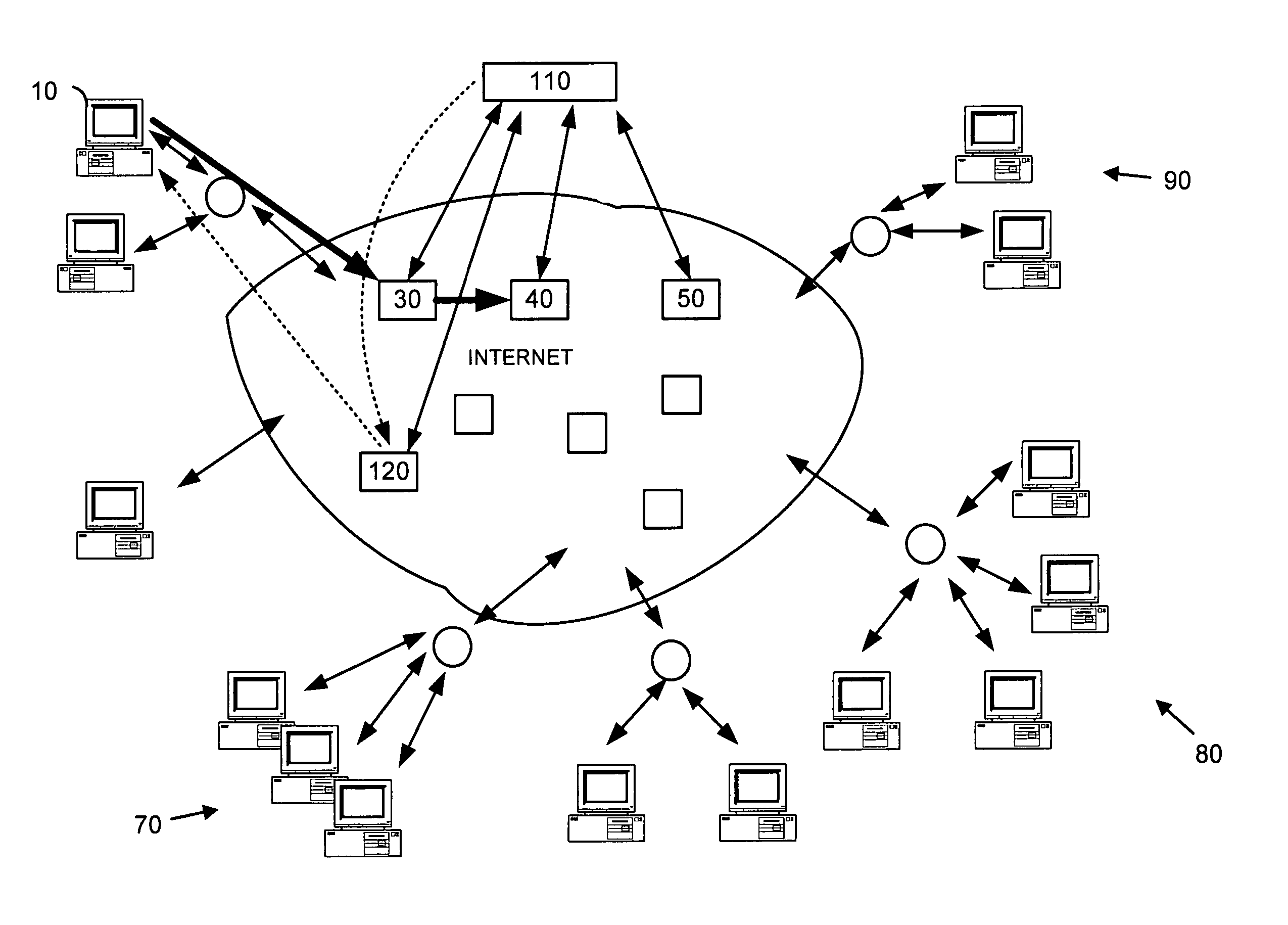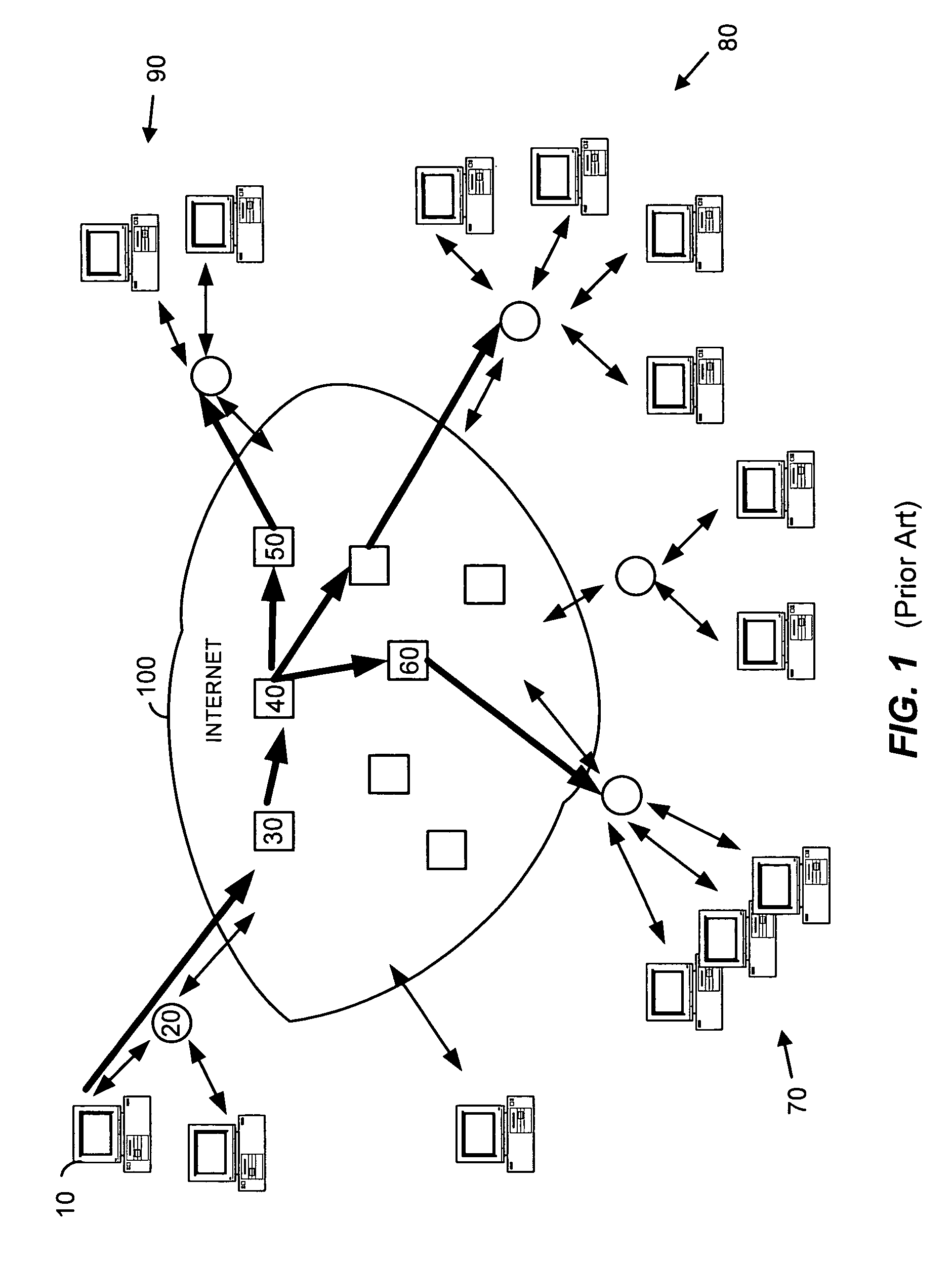System for email processing and analysis
a technology for email and analysis, applied in the field of digital information processing, can solve the problems of increasing the number of unwanted emails in the email system, difficult detection of spam, and difficulty in keeping such information confidential
- Summary
- Abstract
- Description
- Claims
- Application Information
AI Technical Summary
Benefits of technology
Problems solved by technology
Method used
Image
Examples
Embodiment Construction
[0021]FIG. 1 illustrates general characteristics of an email system using a digital network such as the Internet. Although the invention is discussed primarily with respect to email transferred over the Internet, any suitable network, network topology, transmission protocols, sender-receiver devices and relationships, and other characteristics or properties of electronic devices, processes and transmission methods can be used. For example, features of the invention can be employed on a smaller scale to local area networks (LANs), campus or corporate networks, home networks, etc.
[0022]In FIG. 1, a sender at a client computer such as client computer 10 can create and send an email message to email server 20. Email server 20 transfers the email over Internet 100 to recipients at 70, 80 and 90. The email can be transferred, for example, through servers such as 30, 40, 50 and 60 before reaching local email servers that provide the email to the intended recipients. In the case of spam ema...
PUM
 Login to View More
Login to View More Abstract
Description
Claims
Application Information
 Login to View More
Login to View More - R&D
- Intellectual Property
- Life Sciences
- Materials
- Tech Scout
- Unparalleled Data Quality
- Higher Quality Content
- 60% Fewer Hallucinations
Browse by: Latest US Patents, China's latest patents, Technical Efficacy Thesaurus, Application Domain, Technology Topic, Popular Technical Reports.
© 2025 PatSnap. All rights reserved.Legal|Privacy policy|Modern Slavery Act Transparency Statement|Sitemap|About US| Contact US: help@patsnap.com



